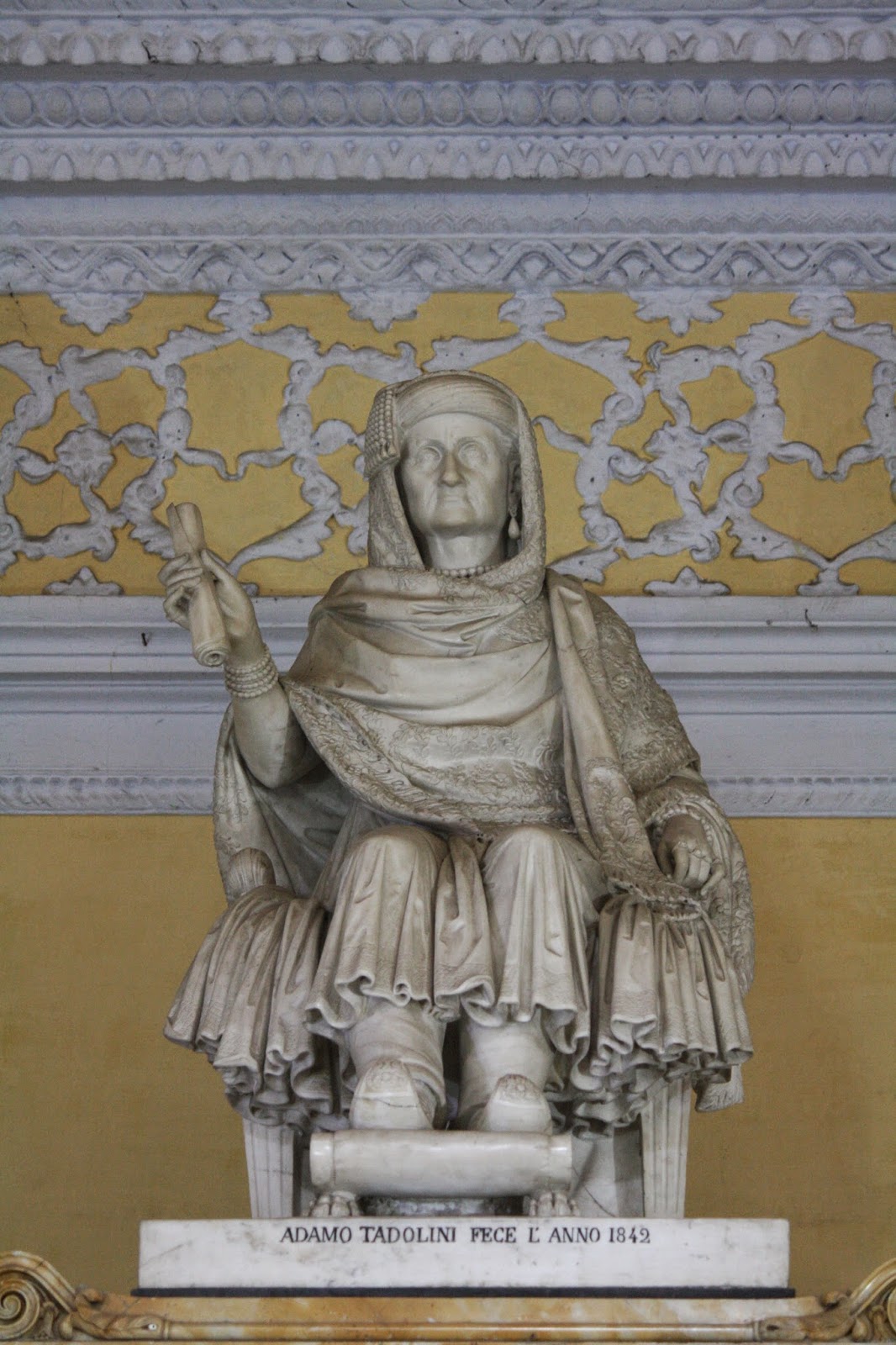Sardhana, 20 October 2014
The Church of Sardhana, the largest in North of India, has a fascinating history. It was built in the 18th century by Begum Samru, a Muslim lady who married a European mercenary soldier, Walter Reinhard Sombre, and became the only Catholic ruler in India after the death of the husband.
The church is dedicated to Our Lady of Graces and it is one of the 19 basilicas in India.
The architect is an Italian military engineering, Antonio Reghelini, from Padua, who was at the at the service of the Begum. The construction was started at 1809 and was completed on 1820. According to a Latin inscription over the main door it was dedicated in 1822. He took inspiration to different churches built in Italy. The Roman domes, a large one over the sanctuary and the two smaller, are similar to the one of S. Peter's basilica in Rome with a touch of Palladio.
The facade is on the Western side (because according to the tradition the altar is towards the rising of the sun) and so it is not visible when you enter the gate from the North side. Eighteen Doric pillars compose the veranda.
The Tomb of the Begum Inside, on the left of the main altar, there is the tomb of the Begum, a 18 feet marble monument of the Italian sculptor Adamo Tadolini of Bologna, one of the best disciples of Canova.
It was erected in 1870 after being commissioned by David Dyce Somru, the adopted son of the Begum. This eighteen foot Carrara marble complex consists of eleven life size figures and three pale in bas-relief. The six figures below, around the panels, are symbolic. While the other four immortalise persons that were intimately connected with the Begum at the time of death.
Right on the top the Begum, who died in 1836 at the age of 85, sits in a throne holding in her hand the scroll of Moghul Emperor Shah Alam I conferring on her the 'jagir' of Sardhana after the death of the husband. In the panel below the queen is smoking the hookah with Europeans and Indians in audience. Standing below, to her right, is her adopted son David Dyce Sombre. To her left is minister Diwan Rae Singh, Motilal Nehru's great grandfather. The inscription is in Arabic, Latin and English.
Farzana 'Begum Somru', the warrior queenFarzana was the daughter of Latif Ali Khan, a nobleman of Arabian origin who settled near the towan of Meerut. After the death of the father, she became a dancer. At 15 years old she met a French official Walter Reinhard, a mercenary who was at the service of the raja of Bharatpur. They did not have children.
She decided to convert to the Catholic religion on 7th May 1781, three years after the husband death and she took the name of Joanna, probably inspired by Joan of Arc.
During the 58 years of her life after the conversion, her faith remained strong and also her desire to build churches. Also her step son, Zafar Yab Khan was also baptised taking the name of the father Walter Balthazzar Reinhardt.
She was always loyal to the Mogul emperor Shah Alam and she helped him to fight rebels and enemies at the door of Delhi. She also saved his life on the battle field. The Emperor conferred on her the title of 'Zeb ul Nisa', the 'jewel of her sex'.
In the 1790 she married a young French, Le Vaisseu, but the love story of the Begum created scandal and discontent among the European officials. The situation led to a lot of unrest and ultimately at a mutiny. The husband was killed and she was captured and kept prisoner until she was rescued by other officers who remained loyal to her.
Afterward, with the rising of the British power, she used her political influence to deal with the new dominator and signed a treaty. Since there the kingdom of Sardhana was in peace and became prosperous.
GraveyardIt is under the care of the Archaeological Department, but it is in a state of decay. In the centre is the family tomb of descendants of the Begum. Here lies buried Julie Anne, daughter of Louis Balthazzar Reinhardt, Somru's son and mother of Dice Somru, the adopted son of the Begum.
As you enter the cemetery, close to the path on the left, is the grave of Le Vaisseau, her French lover who married and who was killed during a revolt of his army. The inscription on the red sandstone slab is the following ‘Priez Dieu pour son ame: requiescat in pace: 15 october 1795'.
To the right of the path, there are a number of pyramidically shaped tomb stones belonging to the family of Reghelini, architect of the church and palace.
How to arriveSardhana is after Meerut in Uttar Pradesh. Along the road to Muzaffanagar, Roorkee and Dehradun turn left and drive for 22 km. The church is outside the city center and in a green field.
The old graveyard is on the other side of the town on a road that passes in front of the bus stand. When you see a temple turn left in a small street. After 200 meters there is the gate. If it is closed, ask for the custodian to open it.



Nessun commento:
Posta un commento